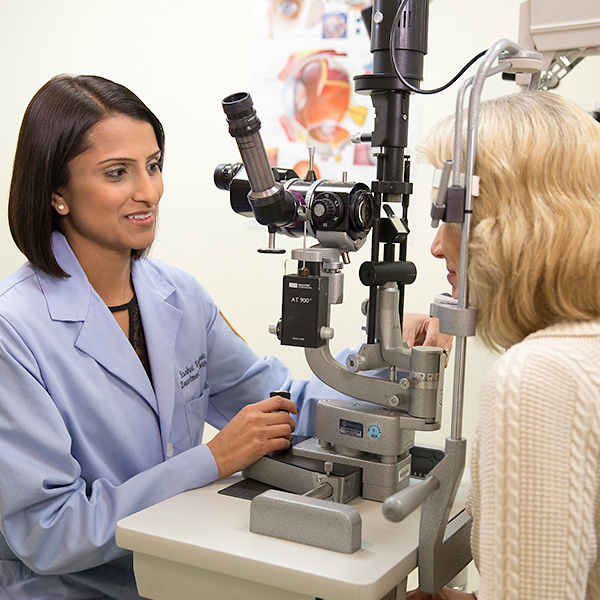Retinitis Pigmentosa
Overview and Facts about Retinitis Pigmentosa
Retinitis pigmentosa is a series of ophthalmological conditions that break down the retina. Because the retina is made up of light-sensitive tissue that helps you see, one of the primary symptoms of retinitis pigmentosa is loss of sight.
Retinitis pigmentosa is an inherited disease, passed down from a parent to a child. Overall, it’s a relatively rare disorder, affecting 1 out of every 4,000 people.
Signs and Symptoms of Retinitis Pigmentosa
Two of the most common symptoms of retinitis pigmentosa are difficulty seeing at night and losing your peripheral vision. This is because the rods (photoreceptors that allow you to see in the dark) and cones (photoreceptors that perceive color and detail) begin to die. Other symptoms of this condition include:
- Tunnel vision
- Problems reading, driving, walking or recognizing people
- Problems distinguishing between colors
- Sensitivity to light
Usually, the symptoms of retinitis pigmentosa begin in childhood or when a person is a teenager. By the age of 40, most people with this condition are legally blind, meaning their vision is 20/200 or less and/or a visual field of 20 degree or less, even with corrective lenses.
Causes and Risk Factors of Retinitis Pigmentosa
Retinitis pigmentosa follows autosomal recessive inheritance, autosomal dominant inheritance and X-linked inheritance patterns, so your chances of developing the disease depend on which form your parent has.
If both of your parents are carriers of the recessive gene, there is a one in four chance you will have retinitis pigmentosa. If they have the dominant or X-linked gene, there’s a one in two chance you’ll inherit the disorder.
Tests and Diagnosis of Retinitis Pigmentosa
To determine whether you have retinitis pigmentosa, your doctor will perform a full eye examination and use an ophthalmoscope to get a clear view of your retina. Other tests for retinitis pigmentosa include:
- Electroretinogram, which measures the electrical activity of photoreceptor cells in your retina
- Visual field testing, in which you watch a dot of light move around a circle to see if you have any loss of vision
- Genetic testing, which examines your DNA to see if you have the mutated gene. It’s also a good way to know if you will pass the disease on to your children.
Treatment and Care for Retinitis Pigmentosa
Unfortunately, there is no effective treatment for the effects of retinitis pigmentosa. However, there are some things you can do to slow your vision loss. These include:
- Taking certain vitamins, such as vitamin A palmitate
- Eating a diet rich in omega-3 fatty acids
- Using eye drops to reduce swelling in the retina
- Wearing sunglasses to reduce sensitivity to light
- Having a retinal implant that slightly improves vision in those with severe vision loss

Request an Appointment
Whether you are seeking routine eye care or have a specific vision issue, our team treats a wide range of eye diseases and conditions, including cataracts, glaucoma, macular degeneration and strabismus. Schedule an appointment today.
Schedule a Telehealth Appointment
